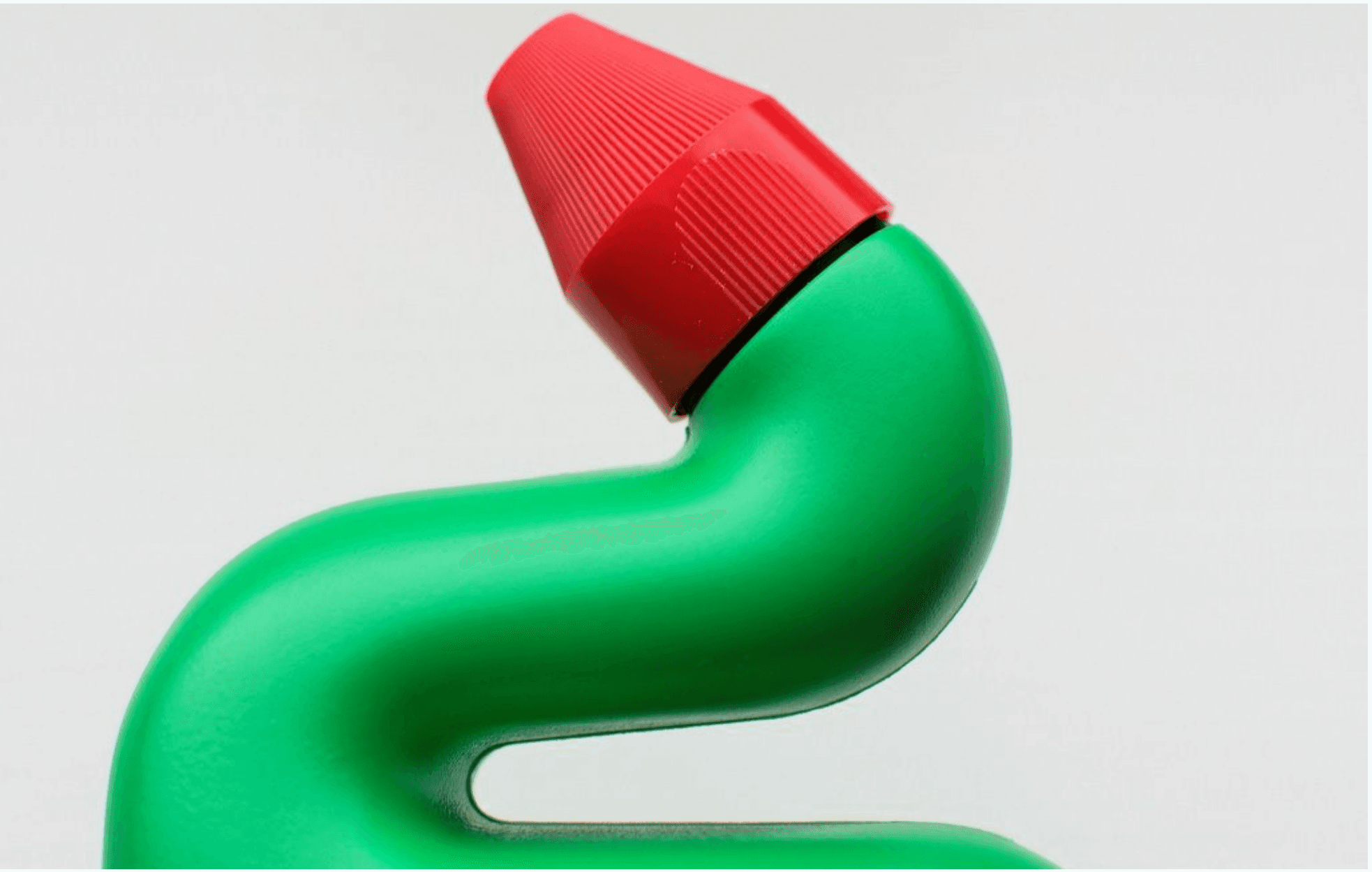Our Everyday Icons series highlights some of the lesser-known stories in Swiss design; objects that are often hiding in plain sight but have been designed with the utmost attention to detail and purpose. While we’ve discussed everything from the Feller light switch to the REX potato peeler, there is one Swiss icon that will not be proudly displayed – but it doesn’t mean it’s not important. Let’s talk about the Toilet Duck.
At the time of writing this, spring has sprung. Cherry blossoms are blossoming. Snow is melting away. We are putting away our winter coats and taking out our mid-season jackets (my absolute favorite clothing category, but anyway). And for those of you that like a clean house, you undertake a massive spring cleaning. If you happened to notice that I discretely changed the subject from “we” to “you”… please don’t judge. Ah, spring cleaning. When you get into the nitty gritty. The nit and the grit. The dirt and the dust balls. Under the couch, in the back of the fridge, on the top of dressers, behind the books, over the baseboards, under the rim of the toilet.
The toilet rim. The underbelly of water stains, poorly aimed urine, forgotten skid marks, and general nastiness. How does one clean that all-too-often ignored no-go zone? The Toilet Duck, of course. Le Canard WC. Der WC-Ente. What would we do without the ingenious design of the toilet duck? With its elegant curved neck and pointy beak, the container perfectly nestles the cleaning product into the forgotten crevasses of the toilet.
So why are we talking about the toilet duck, you ask? If you haven’t guessed already, it is a Swiss invention. Maybe it’s not that surprising given Switzerland’s national obsession with order and cleanliness. Do any other countries have national radio programs on cleaning?
Back to the duck. Here is how the story goes.

The year was 1980. The month was June. The place was Dällikon, a small town near Zürich. The person was a certain Vera Düring, wife of Walter Düring of the Düring-Keller family, inventor of Durgol, a product acting against calcium deposits and limescale (I guess the whole family was really into cleaning. As they say, a family that cleans together stays together). Mrs. Düring wasn’t happy with the toilet cleaning products available on the market, so she concocted her own mix with what she had on hand. She tasked her husband with devising a container, and after several attempts, Walter landed on a wooden prototype that looked vaguely like a duck. It proved to be the most efficient way of dispensing his wife’s product into the nooks and crannies of a toilet. And thus, the Toilet Duck was born. Despite many attempts to convince the couple to change the name, Vera and Walter stood by their WC-Ente until 2008, when they sold it to American company SC Johnson, a leading manufacturer of household cleaning products. According to SC Johnson’s website, “Toilet cleaning isn’t rocket science. It’s duck science.”

I can state with certainty that the toilet duck is the unsung hero of Swiss inventions. It has been conquering dirty toilets across the globe for over forty years. It’s not sexy, it’s not cool, it can’t be proudly displayed on a coffee table or decorative bookshelf. Your guests will most definitely not be impressed by it. But it is always there, hiding in plain sight. Like a soldier standing tall at his or her post, the toilet duck can be found in bathrooms around the world, placed discretely next to the toilet, its curved neck and yellow beak pointing up, waiting for its chance to shine.




